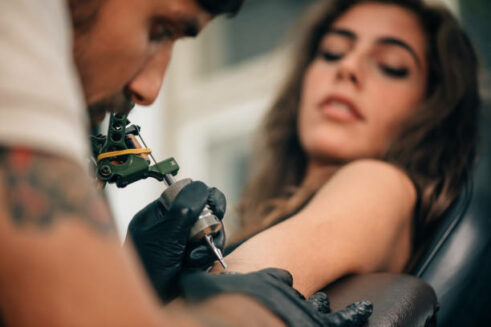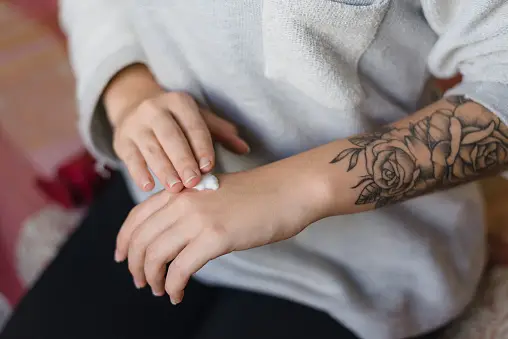Los tatuajes han ganado una enorme popularidad en los últimos años., Cada vez más personas optan por tatuarse como forma de autoexpresión.. Sin embargo, El proceso a menudo puede ser incómodo y doloroso, que lleva a la mayor demanda de cremas entumecedor durante las sesiones de tatuajes. Mientras que estas cremas pueden aliviar enormemente la incomodidad, Es crucial comprender los ingredientes utilizados y considerar la posibilidad de reacciones alérgicas.
En este blog, Exploraremos la importancia de comprender los ingredientes entumecedores de tatuajes y su potencial para causar alergias, permitiéndole tomar decisiones informadas y priorizar su seguridad.
Entendiendo las cremas de adormecimiento del tatuaje

Cremas atatuados, cada vez más popular para aliviar la incomodidad del tatuaje, se adaptan al dolor opaco durante el proceso de tatuaje, Asegurar una experiencia más cómoda.
Existen varios tipos de estas cremas, con la lidocaína como un ingrediente común, Actuar como un anestésico local temporal para adormecer la piel. Algunos también pueden presentar prilocaína o benzocaína, Ofreciendo efectos de adormimiento similares al bloquear las señales nerviosas que transmiten dolor al cerebro.
En el proceso de solicitud, Estas cremas se usan típicamente antes de que comience el tatuaje. Preparar el área del tatuaje es crucial, Asegurar la limpieza. La crema se aplica generosamente, se fue por alrededor de 30 minutos, Permitir que los agentes entumecedores entren en vigencia.
Las áreas de aplicación comunes incluyen regiones sensibles o dolorosas como la caja torácica, brazo interior, o áreas óseas, Aunque los detalles pueden variar según la tolerancia al dolor individual.
Mientras que las cremas de adormecimiento del tatuaje alivian la incomodidad, No eliminan por completo el dolor. Los niveles de alivio del dolor varían entre las personas, influenciado por factores como la tolerancia al dolor y la técnica de tatuaje empleada.
¿Cómo funcionan las cremas entumecedoras??
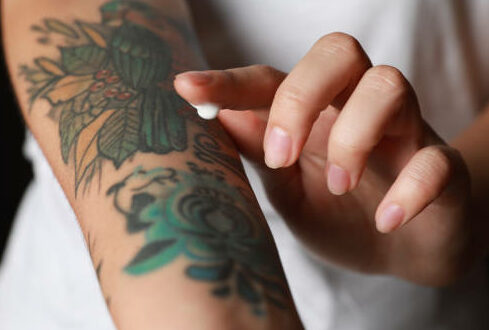
Cremas atatuados, Una opción popular para aquellos que buscan alivio del dolor durante los tatuajes, función bloqueando las señales nerviosas y reduciendo la sensación de dolor para una experiencia más cómoda.
Los ingredientes activos, como lidocaína o benzocaína, caer bajo anestésicos locales, inhibir la transmisión de la señal de dolor de los nervios al cerebro. Aplicado a la piel, Estas cremas se absorben en la capa externa (epidermis) y profundizar en la dermis, donde ocurre el tatuaje. Toma de absorción 20 a 60 minutos, variando con el tipo de crema y la piel individual.
A pesar del alivio temporal, Tenga en cuenta los posibles efectos secundarios: irritación de la piel (enrojecimiento, picor, hinchazón), y reacciones alérgicas, especialmente si alérgico a sustancias similares. El uso incorrecto puede conducir a una absorción sistémica, causando mareos, mareal, o entumecimiento en otro lugar. Siga las instrucciones de crema, y consulte a un profesional de síntomas inesperados.
Algunos artistas de tatuajes advierten contra cremas entumecedoras, citando impactos en el proceso de tatuaje. Estas cremas pueden reafirmar la piel, complicando el trabajo del artista. Las cremas con vasoconstrictors pueden afectar la curación al reducir el flujo sanguíneo al área tatuada.
En conclusión, El tatuaje de cremas de adornos alivia el dolor durante los tatuajes bloqueando las señales nerviosas. A pesar de los beneficios, Comprender los posibles efectos secundarios y los riesgos es crucial.
Reacciones alérgicas a las cremas de adormecimiento del tatuaje
Cremas atatuados, Popular para minimizar la incomodidad del tatuaje, llevar riesgos potenciales, específicamente reacciones alérgicas. Distinguir entre irritación y una reacción alérgica verdadera es clave.
Irritación, una respuesta temporal a sustancias en cremas entumecedoras, Resulta en enrojecimiento, picor, o malestar, Resolviendo poco después de la extracción de crema. En contraste, una reacción alérgica genuina, activado por un ingrediente específico, implica el sistema inmunitario que lanza una respuesta más intensa y persistente, Incluso después de la eliminación de crema.
Reconocer los síntomas de reacción alérgica es crucial. Picazón severa, hinchazón, abrasador, urticaria, o puede ocurrir una erupción, con casos severos que muestran dificultad para respirar o mareos, Requerir atención médica inmediata.
Mientras que generalmente es seguro, Las cremas de adormecimiento del tatuaje conllevan un bajo riesgo de reacciones alérgicas, particularmente en individuos sensibles a los ingredientes como la lidocaína o la benzocaína. Realizar una prueba de parche antes de usar ayuda a identificar alergias potenciales, Asegurar una experiencia de tatuaje segura.
Identificación de ingredientes alergénicos
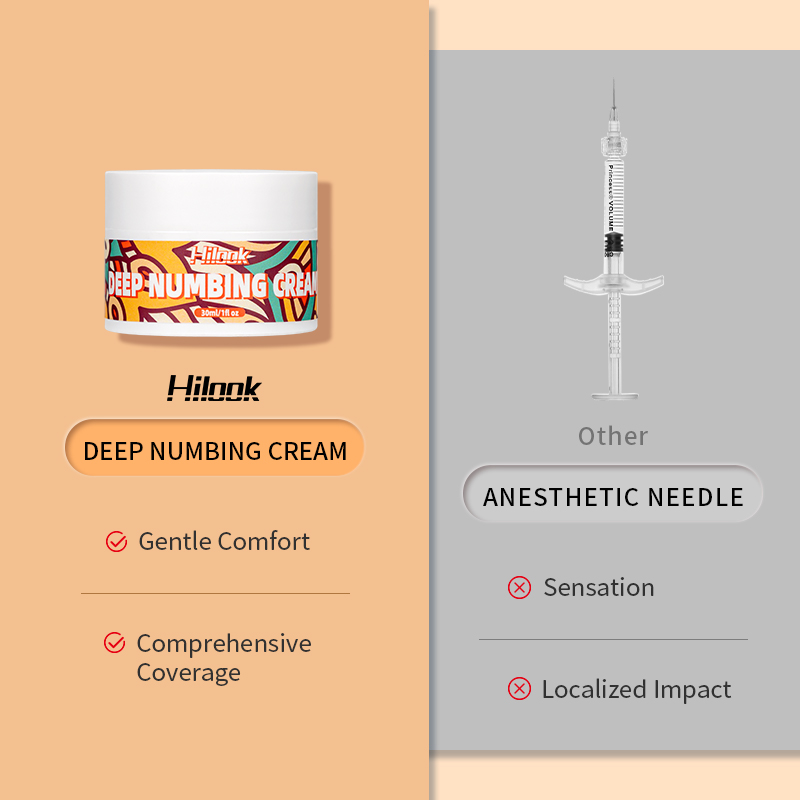
Identificación de ingredientes alergénicos
Las alergias plantean una preocupación con las cremas de adormecimiento de tatuajes, Requerir conciencia de posibles desencadenantes antes de la aplicación. Esbozaremos ingredientes alergénicos comunes, discutir factores aumentando la susceptibilidad, y proporcionar consejos para identificar estos elementos.
Ingredientes alergénicos comunes
- lidocaína: Efectivo pero puede causar reacciones alérgicas como la erupción, picor, o hinchazón en algunas personas.
- Benzocaína: Similar a la lidocaína, puede conducir a reacciones alérgicas de la piel, como el enrojecimiento, urticaria, o ampollas.
- Tetracaína: Este anestésico local puede provocar respuestas alérgicas, resultando en irritación de la piel o dificultad para respirar.
- Prilocaína: Casi nunca, puede desencadenar la dermatitis de contacto alérgica en individuos sensibles.
Individuos más propensos a las alergias
Mientras que las alergias pueden afectar a cualquiera, La susceptibilidad aumentada está vinculada a:
- Antecedentes personales o familiares de alergias
- Reacciones alérgicas previas a productos o ingredientes similares
- Asma, eczema, u otras condiciones atópicas
- Sistema inmunitario debilitado
Consejos para lectura de etiquetas y productos de tatuaje artesanal
Garantizar la seguridad y minimizar los riesgos de alergia con estos consejos de lectura de etiquetas:
- Listas de ingredientes claras: Los fabricantes deben proporcionar listas integrales de ingredientes.
- Familiarizar con alérgenos comunes: Conocimiento previo de ingredientes alergénicos Identificación de ayudas en etiquetas.
- Verifique con alérgenos personales: Verifique que los ingredientes que causen alergias estén ausentes en la crema adormecedora.
- Busque asesoramiento médico si es incierto: Consulte a los profesionales de la salud para obtener una opción segura si es incierto sobre cualquier ingrediente o sus posibles efectos alérgicos.
Además, Con el surgimiento de los productos de tatuaje artesanal, Más artistas de tatuajes están personalizando sus propias cremas para adormecer el tatuaje y Tatuaje de tatuaje de etiqueta privada After Care. Esto permite un etiquetado más claro y personalizado, Asegurar que los clientes reciban instrucciones y advertencias explícitas.
Alergias de crema de adormecimiento del tatuaje: Tratamiento y manejo
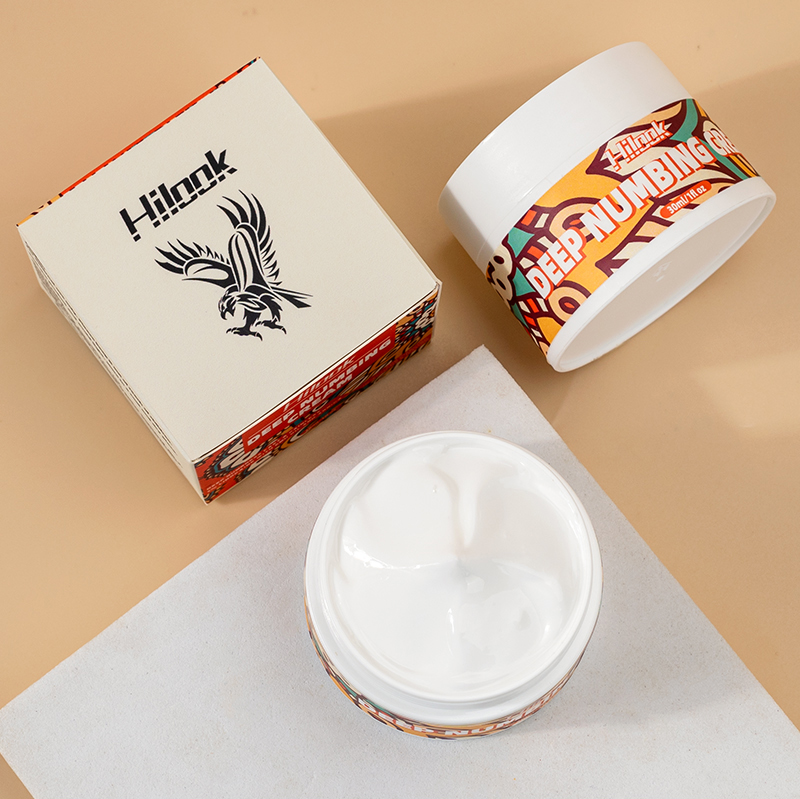
Usar crema anestésica antes de un tatuaje es común para la reducción del dolor, Pero pueden ocurrir reacciones alérgicas. Aquí, Exploramos el tratamiento, La importancia del asesoramiento profesional, y consejos para administrar y prevenir reacciones futuras.
Si ocurre una reacción alérgica, Consulte a un profesional médico para un diagnóstico preciso. Se pueden sugerir antihistamínicos de venta libre o cremas corticosteroides para aliviar los síntomas. Los casos graves pueden requerir opciones de longitud de prescripción o medicamentos orales para suprimir la reacción.
El asesoramiento profesional es crucial, Evitar el autodiagnóstico. Un proveedor de atención médica identifica el alérgeno, Ofrece tratamientos adecuados, y monitorea la recuperación, especialmente en casos severos con síntomas graves.
El manejo de una reacción alérgica implica evitar la irritación, Manteniendo el área limpia, e hidratación con productos hipoalergénicos. Aplicar una compresa fría puede ofrecer alivio. La prevención incluye realizar pruebas de parche antes de usar cualquier crema adormecedora, Listas de ingredientes de lectura, y consultar a un profesional de la salud si tiene alergias.
Reactividad cruzada con tintas de tatuaje
Elegir la crema anomnable para un tatuaje menos doloroso es común, Pero las reacciones alérgicas son posibles. Explore las opciones de tratamiento, La importancia del asesoramiento profesional, y consejos para administrar y prevenir reacciones futuras.
En caso de una reacción alérgica a la crema adormecedora del tatuaje, Busque una consulta médica rápida para un diagnóstico preciso. Se pueden recomendar antihistamínicos de venta libre o corticosteroides tópicos para síntomas leves, Mientras que los casos severos pueden requerir corticosteroides o medicamentos orales para suprimir la reacción.
El asesoramiento profesional es crucial. Autodiagnóstico y tratamiento en el hogar pueden parecer tentadores, Pero un proveedor de atención médica garantiza un diagnóstico preciso, identifica alérgenos, y prescribe un tratamiento adecuado. Reacciones severas, como dificultad para respirar o hinchazón facial, Requerir atención médica inmediata.
La gestión y la prevención son clave. Evite rascar el área afectada, Mantenga la piel limpia e hidratada con productos hipoalergénicos, y evitar irritantes potenciales. Aplicar una compresa fría o tomar un baño tibio también puede ofrecer alivio.
Para la prevención, siempre realice una prueba de parche antes de usar cualquier crema anestacen. Aplicar una pequeña cantidad a un área discreta, esperar 24 Horas para reacciones, y verifique cuidadosamente las listas de ingredientes para los alérgenos conocidos. Si las alergias son una preocupación, Consulte a un profesional médico antes de usar crema adormecedora.
Prevención de reacciones alérgicas a las cremas de adormecimiento del tatuaje
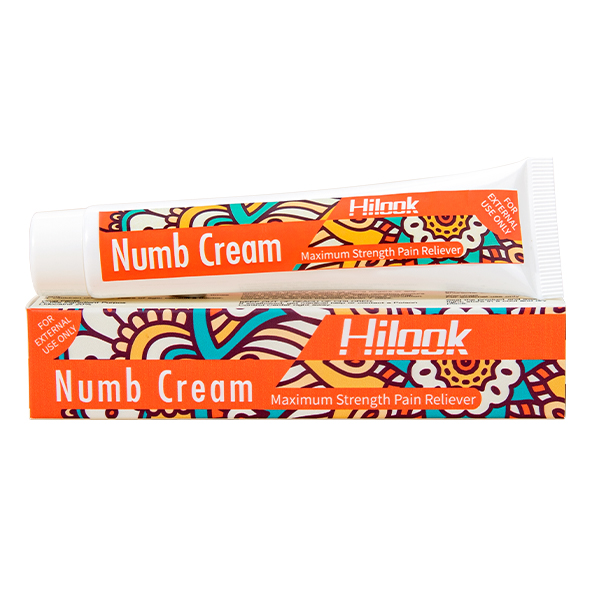
El uso de la crema de adormecimiento del tatuaje puede aliviar la incomodidad del tatuaje, Pero las precauciones son cruciales para aquellos con piel sensible o historial de alergias. Siga estos consejos para una experiencia de tatuaje seguro:
- Prueba de parche: Antes de uso inicial, realizar una prueba de parche. Aplique una pequeña cantidad a su antebrazo interno, esperar 24 horas, y proceda si no hay reacción adversa. Si surge incomodidad, Evite la crema y considere alternativas.
- Consultar a profesionales: Busque el consejo de un dermatólogo o artista de tatuajes experimentado. Pueden recomendar cremas adecuadas para su piel, Identificar alérgenos potenciales, y sugirir opciones hipoalergénicas, minimizar los riesgos de alergia.
- Manejo alternativo del dolor: Explore métodos alternativos para el alivio del dolor. Terapia con hielo, Aplicar hielo al área del tatuaje antes y durante el proceso, puede adormecer la piel. Considere los anestésicos tópicos con diferentes ingredientes para evitar alérgenos específicos.
Priorizar estas medidas reduce las posibilidades de reacciones alérgicas a las cremas de adormecimiento del tatuaje. Prueba de parche, guía profesional, y estrategias alternativas aseguran una experiencia de tatuaje más segura y agradable, especialmente para individuos propensos a las alergias. Priorice siempre su salud y bienestar en las decisiones de arte corporal.
Conclusión
Esta publicación discutió los ingredientes comunes de crema para adormecer el tatuaje, estresando su potencial de alergia. Comprender estos ingredientes es crucial para una experiencia de tatuaje segura. Destacamos los riesgos con lidocaína y benzocaína, instar a las pruebas de parche y el asesoramiento profesional. La seguridad es clave; Consulte a un tatuaje artista o dermatólogo para obtener orientación. Compartir experiencias en los comentarios para una comunidad centrada en la seguridad. Asegure un proceso de tatuaje seguro a través de la investigación y la consideración.


